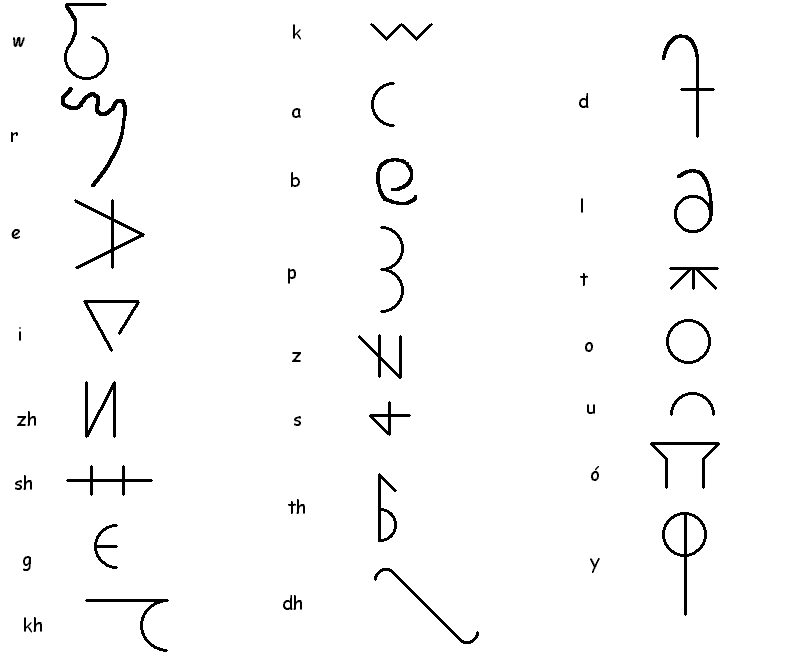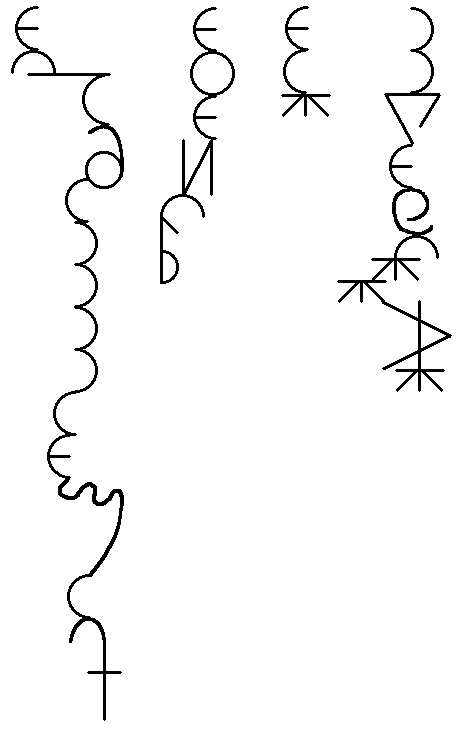Back to top
Letters
The Old Esmic letters in their canonized alphabetical order appear here with the transliterational equivalents next to them.

There are no capitals.
Back to Nouns
Back to top
Arrangement
The letters connect to each other, as in Arabic or cursive English. However, they do not connect to the right. Instead, the words form with the top of each letter connecting to the bottom of the one that comes before it. This is hard to describe, so here's a picture of what English would look like if it did it. Words come after one another going in a rightward direction.

The general rule for connecting two letters is that only the highest point on the lower one may connect to the upper letter, and only the lowest point on the upper letter may connect to the lower letter. If there are two points on the lower letter that are equally high, only one may connect to the upper letter, even if the bottom of the upper letter is a horizontal line, and the same is true in reverse: if the upper letter has two lowest points, only one may connect to the top of the next letter. There is no rule on what direction a connection may go — see the word "LIKE" in the example. The L, I, and K connect rightward, but the E connects leftward. This is perfectly legal, although in my experience connecting to the right is better, as you don't end up bumping right into other words, and I think connecting in a basically downward, vertical manner looks the most attractive.
Here is a picture of an Old Esmic sentence, in case the English example didn't help. It says "gukhlappagrad gogzhuth gat pigbuttet".
